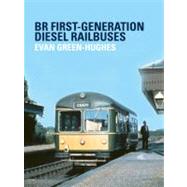Br First-generation Diesel Railbuses
, by Green-hughes, Evan- ISBN: 9780711036352 | 0711036357
- Cover: Paperback
- Copyright: 2/1/2012
This new volume written by rail expert, Evan Green Hughes provides readers with everything they need to know about the BR First Generation Diesel Rail buses.The railway industry in the mid-1950s faced a number of challenges. One of these problems was the rapid introduction to service of large number of new diesel and electric locomotives and multiple-units, many of which were untried and untested, whilst at the same time facing a rapid deterioration of the industry's finances as passenger and freight traffic declined. Whilst there had been limited line closures from the 1920s onwards, this was still the period before the Beeching report when wholesale line closures were not on the agenda and thus the railways sought a solution, using modern traction, for the most lightly-trafficked lines.The answer was the small four-wheel diesel rail bus. Thus, in the late 1950s, a total of 22 units were acquired for passenger service (plus three for departmental use)from no less than six different manufacturers (including one based in Germany)for these lines. The units were allocated to the Eastern, Midland, Scottish and Western regions, where they saw service on a number of lines, including Cambridge to Mildenhall, the Saffron Walden branch, the Braintree branch, Crieff to Gleneagles, Bedford-Northampton, Hitchin-Bedford, Ayr-Kilmarnock, Tetbury-Kemble, Beith-Lugton, Padstow-Bodmin Road and Yeovil Town to Yeovil Junction.Many of the lines for which they were built were to close, many a result of the Beeching 'axe', and thus the rail buses had a relatively short life. All the passenger vehicles were withdrawn by the late 1960s, although no fewer than six survive in preservation (including four of the German-built examples); two of the departmental units also survive in preservation.This new reference guide includes information on allocation history, livery variations, coupling codes, under frame detail, number sequences and a whole host of other information. Illustrated throughout with 150 mono and colour photographs it will also include scale drawings of the main types. A must have on every rail enthusiasts book shelf!







